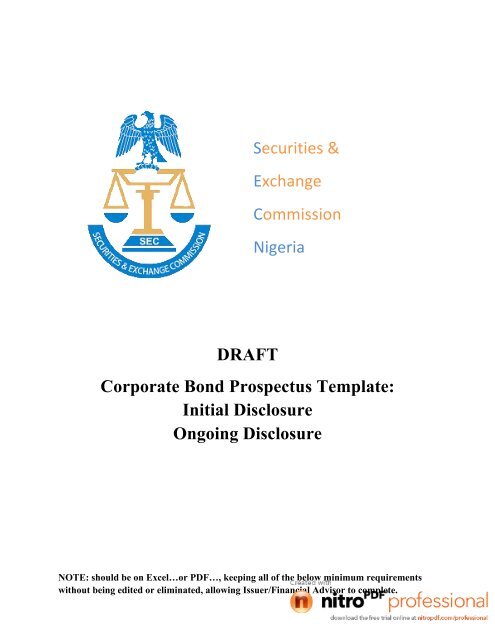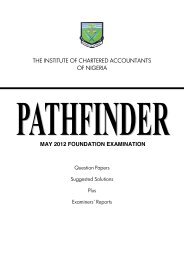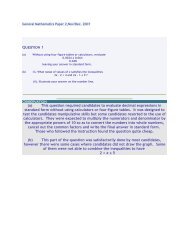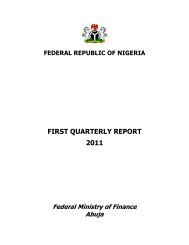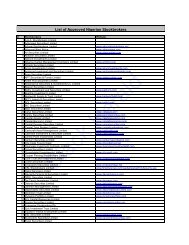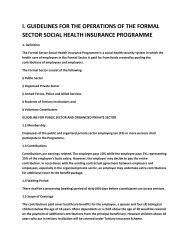DRAFT Corporate Bond Prospectus Template: Initial ... - Resourcedat
DRAFT Corporate Bond Prospectus Template: Initial ... - Resourcedat
DRAFT Corporate Bond Prospectus Template: Initial ... - Resourcedat
Create successful ePaper yourself
Turn your PDF publications into a flip-book with our unique Google optimized e-Paper software.
Securities & Exchange Commission Nigeria <strong>DRAFT</strong><strong>Corporate</strong> <strong>Bond</strong> <strong>Prospectus</strong> <strong>Template</strong>:<strong>Initial</strong> DisclosureOngoing DisclosureNOTE: should be on Excel…or PDF…, keeping all of the below minimum requirementswithout being edited or eliminated, allowing Issuer/Financial Advisor to complete.
Fill in the blanks or provide description.A. The prospectus, initial disclosure, to include:IssuerName:Address:Contact person and telephone number:Lead Issuing HouseName:Address:Contact person and telephone number:1. Terms of the <strong>Bond</strong>• Description of <strong>Bond</strong>s:• Principal amount:• Denomination:• Issue Price/Par Value:• Tenor/Maturity Date:• Coupon/Coupon Frequency:• Class:• Status of <strong>Bond</strong>s, including subordination and/or credit enhancement,describe:• Redemption provisions (mandatory or optional), describe:• Options, put/call, if any, describe:• Conversion provisions, if any, describe:• Restrictive (or protective) covenants 1 , describe:• Minimum Subscription Amount:1 Restrictive (or Protective) Covenants protect the interests of bondholders by restricting the activities of the issuer in certain situations. These limitations include: • Debt limits—restrictions on taking on more debt; • Dividend payments—limitations on payment of dividends or retiring equity; • Limitation on liens or negative pledge (the issuer will not pledge assets to another lender, creating a class of creditor that ranks above the bondholders in the hierarchy of creditors); • Limitation on asset dispositions; • Limitations on merger, consolidation or sale; and/or • Limitations on transactions with affiliates. •
• Events of default, describe:• Meetings of bondholders, describe:2. A description of the bonds, including:• Declaration by Issuer:• Security/collateral, if secured:o Description of other enhancement, if anyo A description of any third party agents, guarantors, insurance onthe issue, etc.• Payment of principal and interest, dates and amount, including date fromwhich interest begin to accrue:o Amortized? Bullet? Describe:• Interest rates or manner of determining interest rates:• Price:• Method of Issuance:• Closing date:• Credit Rating(s) by which Credit Rating Agencies:• Tax status:• Listing on exchange(s), name:3. Trust indenture and other significant contracts described:4. <strong>Corporate</strong> authorization, if needed, describe:5. A description of the risks of the bonds being issued:6. Utilization of proceedsTable of Utilization to include:Amount:Percentage:Duration:7. A description of the issuer (note: if the issuer has securities already listed on anexchange, only updates from the originally submitted prospectus are required, withaccess to the original prospectus available online, if not in hard copy):• Management• Description of issuer’s business and industry specific information• Major contracts• Any legal or regulatory enforcement actions relating to the issuer; includesolicitor’s opinion8. Issuer’s financials, last three years audited (attach)9. Parties to the offer:• Issuer:• Lead Issuing House:• Trustees:o Joint Issuing Houses:• Solicitor to the Issue:• Solicitor to the Issuer:• Auditor to the Issuer:
• Reporting Accountants:• Stockbrokers:• Registrar:• Underwriter(s), if applicable:• Receiving Bank(s):10. Any other pertinent information:11. Glossary of terms/definitions:B. Continuing Disclosure, ad hoc within two business days of event, information to be sentto SEC and Stock Exchange (if applicable), except for financials to include:IssuerName:Address:Contact person and telephone number:1. Quarterly financial statements2. Nonpayment-related defaults;3. Unscheduled draws on debt service reserves and/or credit enhancements reflectingfinancial difficulties;4. Substitution of credit or liquidity providers, or their failure to perform;5. Adverse tax opinions or events affecting the tax-exempt status of the <strong>Bond</strong>s;6. Change in control of issuer, e.g., issuer is acquired by or merges with another company;if there is a change in the trust deed7. Modifications to rights of bondholders;8. <strong>Bond</strong> calls;9. Defeasances (i.e., debt negation without repayment; setting aside of assets for repaymentof a debt without actual retirement of the debt);10. Release, substitution, or sale of property securing repayment of the <strong>Bond</strong>s (this includesthe issuer (1) incorporating a Negative Pledge Covenant and (2) an Anti-Asset StrippingCovenant restricting the disposal of more than 20% of group assets within any rolling 12-month period, unless the proceeds are either (i) re-invested in new operating assets of asimilar nature or (ii) applied to pay down debt that is senior to the bonds or (iii) used tooffer the bonds back at par.); and11. Rating changes.


